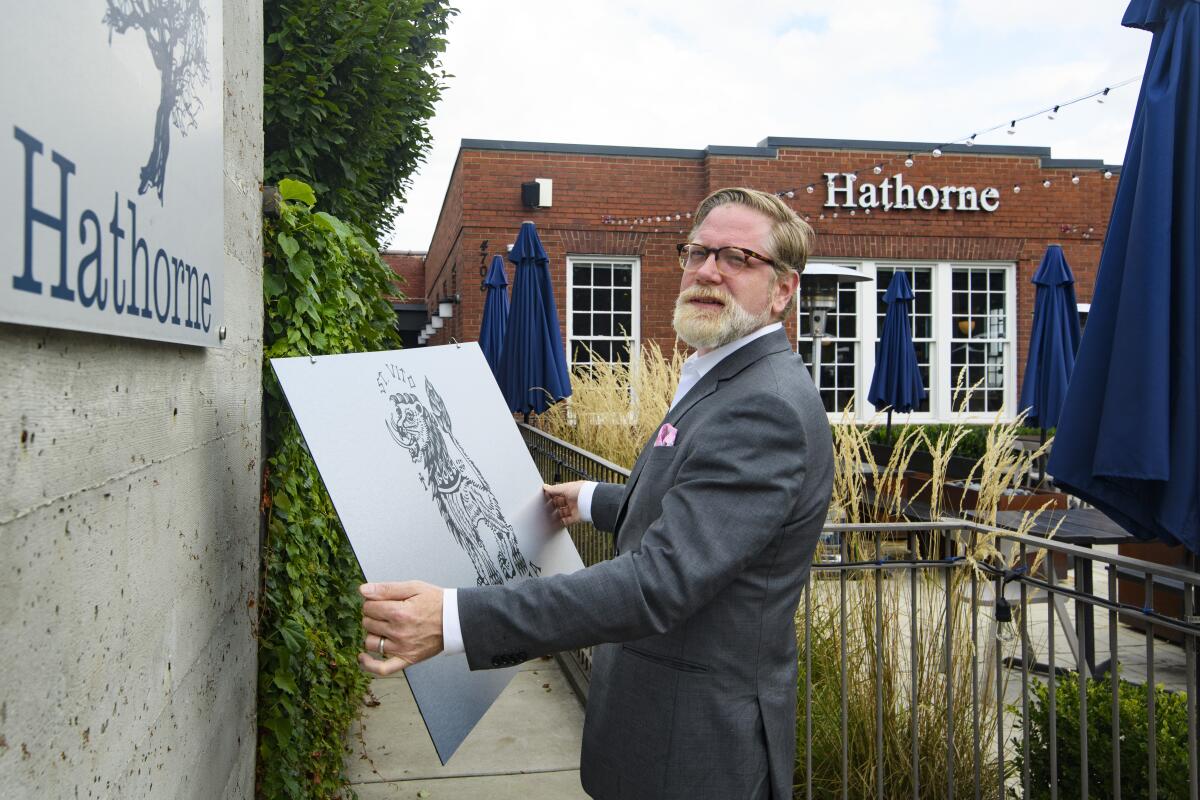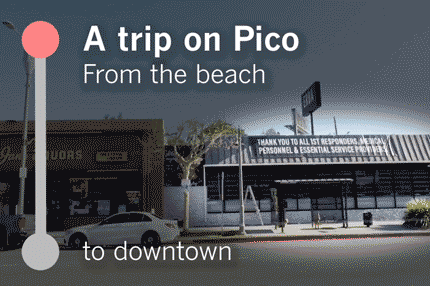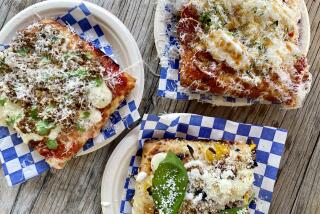Pop-up restaurants may stick around as COVID sees resurgence

- Share via
Pop-up restaurants, many started as stopgap measures by struggling chefs and owners, may have staying power as consumers continue to embrace takeout and delivery and the Delta variant threatens to make dining in less of an option.
Pop-up restaurants can take a variety of forms, from a ramen maker appearing for one night only at an established bar or restaurant, to a taco maker temporarily hosting diners in an otherwise unused space, to a chef offering meatballs for delivery only.
Cheaper to operate than regular restaurants because they have less overhead and staffing, pop-ups let chefs and owners keep working during the early part of the pandemic, when dining rooms were closed and the economy was teetering. They’ve helped bring buzz to existing restaurants that host them. And some have even morphed into permanent new businesses.
Now, as reopenings across the country are threatened by a rise in COVID-19 cases, pop-up creators and hosts are wondering what happens next.
The restaurant industry has been hit hard during the pandemic. It is still down 1 million jobs from the pre-pandemic employment level of 12.3 million. U.S. restaurant sales in 2020 totaled $659 billion, down $240 billion from expected levels, according to the National Restaurant Assn. Sales rebounded this year as the economy recovered and restrictions were lifted, but now some economists are paring back expectations for growth, partly because they expect fewer people to dine out.
“2021 is definitely a year of transition for the restaurant industry,” said Hudson Riehle, senior vice president of research for the National Restaurant Assn. “The industry is still being substantially challenged by the COVID situation.”
The flexibility of the takeout and delivery model helped Alex Thaboua meet those challenges. Thaboua is co-owner of Electric Burrito, which began as a pop-up at Mister Paradise bar in New York in 2020. A permanent location opened in May and is focused on takeout and delivery, so even if there is another lockdown, the restaurant will be able to operate, he said.
“This flexibility was something we found very important during our pop-up stages, when the world was getting locked down and heavy restrictions were being placed on businesses,” he said. “We’ve designed our operations in a way that we can continue to operate with a lean team, with every safety precaution taken, to be able to serve guests in both a to-go and delivery capacity.”
With strict limits on indoor commerce, some businesses bent or broke public health rules to serve their customers. Owners say they had little choice.
Hathorne, a restaurant in Nashville, has hosted about 10 pop-ups featuring area chefs since the pandemic began. For the pop-ups, it is a way to get exposure and have access to a full kitchen. For Hathorne, it’s a way to fill seats on nights they’d ordinarily be empty. Since reopening for in-person dining in October, the restaurant has opened just Wednesday through Saturday.
“We knew, when we reopened, we were not going to be able to be open six or seven days a week because staffing and business wasn’t going to be there,” said John Stephenson, Hathorne’s owner. “I knew that I wanted to utilize the space.”
A Nashville chef for decades, Stephenson knew a number of chefs who were trying to stay afloat during the pandemic with projects like creating takeout dinners or starting food trucks, he said.
The first pop-up at Hathorne started in October, with a Mexican theme from Julio Hernandez centered on his homemade tortilla. It was a success, and more pop-ups followed. Currently, Hathorne hosts Michael Hanna’s focaccia-based pizza company, St. Vito Focacciaria, every Sunday.
Hanna and his staff get work and “it keeps people coming in our doors,” Stephenson says.
The arrangement with St. Vito is long term, so he hired Hanna as a chef. Hanna gets a percentage of the Sunday sales; Hathorne pays for all products and labor.
Stephenson said he plans to keep on having pop-ups even after the pandemic wanes rather than reopening full time.
Some businesses cut hours, services and staff, or closed altogether. But many have survived beyond their expectations.
Pop-ups can be a way to attract attention for new projects. William Eick bought a building in Oceanside, Calif., to start his own restaurant this year but initially had trouble finding investors.
“Most people worried about getting involved in restaurants during the pandemic,” he said. “So, we had to get creative. I thought, if we can run a pop-up, we can put the proceeds and profits into building the restaurant.”
In May he started Naegi, a pop-up serving fried chicken sandwiches from a window in the building he bought. The pop-up helped bring awareness to the permanent restaurant, Matsu, a more traditional Japanese restaurant with a tasting menu, which will open in a few weeks.
“It helped bring a lot of awareness, it helped start spreading word of mouth more than what we ever thought it would do,” he said.
He doesn’t expect another lockdown in Oceanside, but if it happens, he will just continue to operate Naegi, he said.
For Marisa Iocco, who co-owns Italian restaurant Spiga Ristorante in Needham, Mass., a pop-up was a way to stay positive during the pandemic. She opened Polpettiamo in April in Providence, R.I. It serves only meatballs, and just for takeout.
“During the pandemic it was very challenging to survive,” she said.
The meatballs — which are also offered as appetizers at Spiga — are created in the kitchen at her main restaurant and finished in a kitchen in Providence, which has a staff of three.
She is considering a bricks-and-mortar location in Providence and another delivery-only location in Boston and doesn’t expect rising cases or future lockdowns to change those plans. But more than anything, creating something new during the pandemic gave her a “vitamin B12 shot” of energy.
“It really helps keep your mood positive,” she said.
More to Read
Sign up for Essential California
The most important California stories and recommendations in your inbox every morning.
You may occasionally receive promotional content from the Los Angeles Times.











